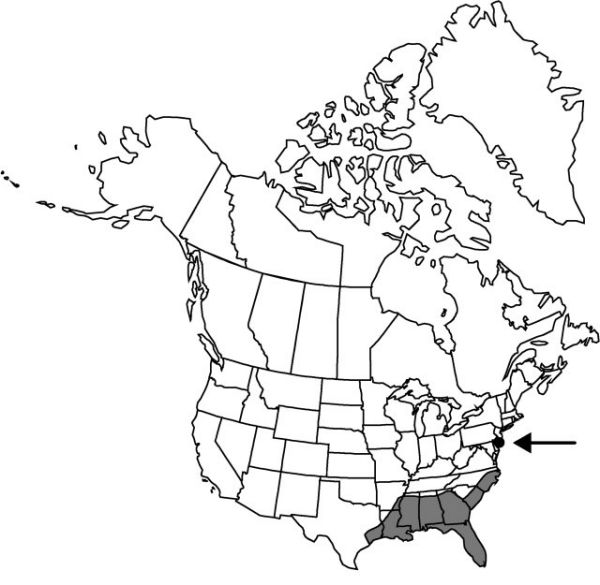Platanthera nivea
Native Orchids Florida, 146. 1972.
Plants 17–90 cm. Leaves 1–3, ascending to spreading, abruptly or gradually reduced to bracts distally, often fugaceous and withered at anthesis; blade linear to linearlanceolate, 3–31 × 0.3–2 cm. Spikes dense. Flowers not resupinate, showy, white; lateral sepals spreading; petals linear-oblong to oblong or elliptic, falcate, basally somewhat dilated, margins entire; lip reflexed ± at middle, linear-elliptic to linear-oblong, without basal thickening, 3–8 × 1–3 mm, margins entire; spur slenderly cylindric, 10–18 mm; rostellum lobes directed downward, very short, obscure, rounded; pollinaria straight, pollinia remaining enclosed in anther sacs; viscidia oblong to linear-oblong; ovary slender, 4–12 mm.
Phenology: Flowering summer (May–Sep).
Habitat: Moist pine barrens, pine savannas, meadows, wet sandy woods, bogs, and cypress swamps
Elevation: 0–500 m
Distribution

Ala., Ark., Del., Fla., Ga., La., Miss., N.J., N.C., S.C., Tex.
Discussion
The column of Platanthera nivea is similar to that of P. clavellata and P. integra and unlike that of other Platanthera species. The columns of these three species bear two pairs of appendages. In P. nivea, on either side of the column and flanking the anther sacs, a cushionlike flap simulates a pollinium; below these structures, elongated slender processes parallel the basal margins of the lip, similar to the situation in Habenaria. Together with its non-resupinate flower and perhaps elongate-spheroidal tuberoids, these characteristics suggest that this species should not be included in Platanthera.
Selected References
None.
